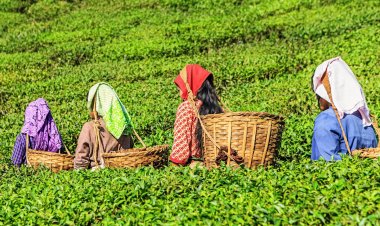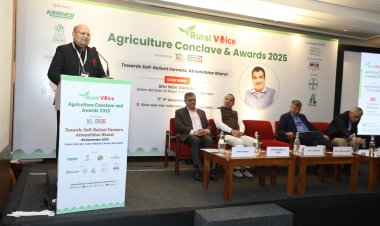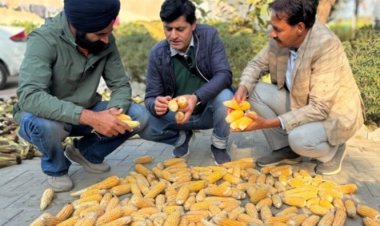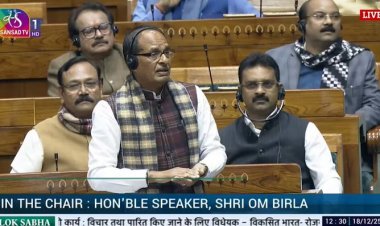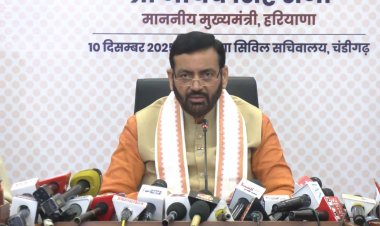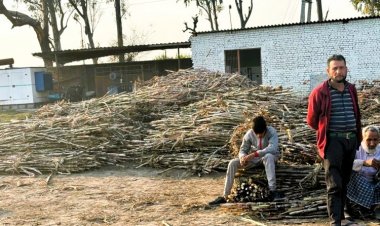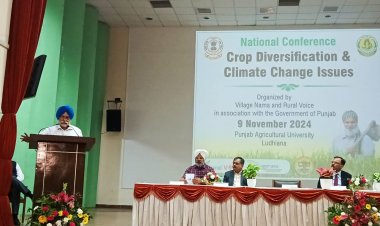Direct sowing of rice gains momentum: Study
A recent study on paddy farming in various parts of the country shows direct sowing of rice (DSR) is gaining momentum in traditional transplanting markets like Punjab/Haryana/UP and Telangana. Growers claim substantial advantages of DSR which includes reduced labour, reduced water consumption and increased Return on Investment (ROI) from rice crop.

A recent study on paddy farming in various parts of the country shows direct sowing of rice (DSR) is gaining momentum in traditional transplanting markets like Punjab/Haryana/UP and Telangana. Growers claim substantial advantages of DSR which includes reduced labour, reduced water consumption and increased Return on Investment (ROI) from rice crop, says the study covering 3,800 farmers across all major rice growing districts in the country. The average land holding of these farmers is 6 acres.
The study, conducted by AgriPulse (Q&Q Research Insight’s syndicate market research study), covered farmers in Punjab, Haryana, UP, Bihar, WB, Chhattisgarh, AP, Karnataka, Telangana. It said weed management needs to be addressed by Agri input companies to increase the adoption of this environmentally sustainable practice.
The research showed Brown Plant Hopper (BPH) was becoming a menace in Haryana and Punjab. BPH, a key rice pest, is capable of causing havoc in rice fields. The pest was traditionally limited to the southern states of India, but is now spreading to northerns states of Punjab and Haryana. Punjab and Haryana have large rice land holdings and BPH can destroy the standing crop in one night, if not controlled in advance. The threat is of the magnitude of losing almost entire standing crop after 80-100 days in field.
The study shows that labour is increasingly becoming expensive and unavailable for rice farming. The cost of labour has gone up by 25-30 per cent in the last four years. Four states where labour costs have significantly risen are Karnataka, West Bengal, Punjab and Bihar. Growers are on the lookout for better technology like drones and more effective pesticides to reduce sprays and some even talk about shifting to less labour-intensive crops.
The report says Leptochloa chinensis, a detrimental rice weed (narrow leaf) is picking pace especially in Northern India. Locally known as “Chinese ghaas”, farmers are threatened and do not have solid solutions as yet. Potentially farmers claim loss of 20-25 per cent if the weed is not controlled. This weed is also seen in DSR rice.
Shift in herbicide usage patterns, movement from pre-emergent (0-3 DAT) to early/post emergent window is being seen, according to the study. Karnataka market, which was traditionally a pre-emergent market, shows strong movement and preference to the post emergent window. The early/post emergent brands are gaining share. Similarly, Punjab market also sees higher traction for post emergent brands.
Hybrid rice adoption does not show promising trends because the last four seasons have shown declining or stable trends in hybrid rice adoption in the key markets of UP and Bihar. The current penetration stands at 7 per cent (national average) and has been stable for several years now. One of the key reasons is the uncertainty of monsoon which makes the farmer unsure of his investment and assured returns from hybrid rice, the study noted.



 Join the RuralVoice whatsapp group
Join the RuralVoice whatsapp group

















